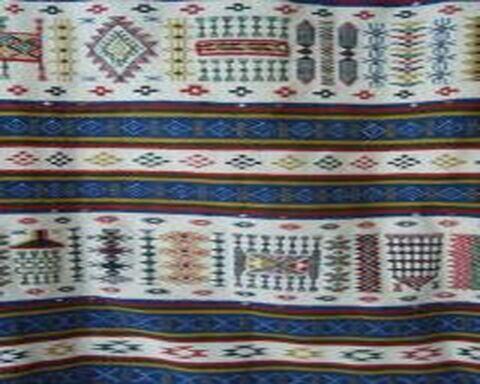The carpet, like other forms of art, is a work of art in which knowledge is expressed through patterns, which may even show the origin of a family, tribe and/or region where the product is from.
It seems that one difference from ancient civilizations, is that the Amazigh carpets in North Africa, have kept their original character and an undeniable authenticity. This is shown with symbols and letters that date back to prehistoric times. Were these letters-patterns the result of parietal art and/or an artifact of changes in early cultures of prehistoric man?
Besides the frescoes and rock engravings, as well as pottery, the Mzab rugs, a beauty without equal, is today the ultimate authentic testimony in the world, dating back to the dawn of time. Throughout the millennium, women, among others, have shown a direct connection between the geometric and abstract language of the carpet and her life.
Some examples:
On a carpet, broken lines, diamonds, chevrons, crosses (these are typical Amazigh crosses, often the center of the carpet, reminiscent of the architecture of the Aeɣrm), braces, combs, stars, and checkerboards are the patterns most often reproduced. In a composed position, diamonds embody beetles and scorpions. In a free position, the diamond embodies the image of the eye that protects from evil spells.
The twig shaped patterns express a difficult or complex situation, or danger, but also plants and the tree of life. Combs in isolated or reciprocal positions remind us of instruments used in a loom. Butterflies in the shape of 2 triangles with touching points are flowers or stars, symbols of feminine beauty. The broken lines in a continuous zigzag often surround a carpet. These lines can embody the image of a stream. These are only a few small examples. The subject should be studied much more extensively.
In the below carpet, the most remarkable letter pattern is Tifinaɣ letter called "aza" (tassezt), which is in the form of a human statue. It can give the image of a free women in her space, with 2 feet and 2 arms raised who take the shape of the Tifinaɣ letter.
